The I-5 Killer Read online
The I-5 KILLER
ANN RULE
WRITING AS ANDY STACK
Copyright © 2014, 1988, 1984, by Ann Rule
All rights reserved.
This edition published in 2014 by:
Planet Ann Rule, LLC
http://www.PlanetAnnRule.com
Seattle, WA
MOBI Edition ISBN 978-1-940018-56-0
Cover Art by Leslie Rule
DEDICATION
This book is dedicated to Beth Wilmot for her courage in testifying against Randall Brent Woodfield, and to the memory of Shari Hull, Donna Lee Eckard, Janell Jarvis, and Julie Reitz.
With deep appreciation to the scores of lawmen who worked so many overtime hours to catch the "I-5 Killer":
In Oregon: Marion County Sheriff's Office, Salem Police Department, Marion County District Attorney's Office, Oregon State Attorney General's Office, Beaverton Police Department, Eugene Police Department, Springfield Police Department, Corvallis Police Department, Medford Police Department, Ashland Police Department, Grants Pass Police Department, Sutherlin Police Department, Linn County District Attorney's Office, Benton County District Attorney's Office, Lane County District Attorney's Office, Multnomah County Sheriff's Office, Oregon State Police.
In California: Shasta County Sheriff's Office, Redding Police Department, Yreka Police Department, Shasta County District Attorney's Office.
In Washington: King County Police Department, Clark County Sheriff's Office, Bellevue Police Department, Bothell Police Department, Olympia Police Department, Vancouver Police Department.
With the author's utmost respect for the efforts of Dave Kominek, Monty Holloway, Dave Bishop, Neal Loper, Ron Womack, Ron Griesel, Gene Farley, Rick Burnett, Rusty Brewer, Chris Van Dyke, and Lisa Cisneros.
For he that said, "Do not commit adultery" said also, "Do not kill." Now, if thou
commit no adultery, yet if thou kill, thou art become a transgressor of the law.
So speak ye, and so do, as they that shall be judged by the law of liberty.
For he shall have judgment without mercy that hath sowed no mercy; and mercy rejoiceth against judgment.
What doth it profit, my brethren, though he say he had faith, and have not works? Can faith save him?
— James 2: 11-14
For nothing is secret, that shall not be made manifest; neither any thing hid, that shall not be known.
— Luke 8:17
TABLE OF CONTENTS
PROLOGUE
CHAPTER 1
CHAPTER 2
CHAPTER 3
CHAPTER 4
CHAPTER 5
CHAPTER 6
CHAPTER 7
CHAPTER 8
CHAPTER 9
CHAPTER 10
CHAPTER 11
CHAPTER 12
CHAPTER 13
CHAPTER 14
CHAPTER 15
CHAPTER 16
CHAPTER 17
CHAPTER 18
CHAPTER 19
CHAPTER 20
CHAPTER 21
CHAPTER 22
CHAPTER 23
CHAPTER 24
UPDATE: 1988
PROLOGUE
The crimes began in a scatter pattern. One here. Another there. And another hundreds of miles and another state away. There was, in the beginning, no commonality. All of the victims were females, but then, females are often victims of violent crime. Some of the victims were teenagers, some were mature women, and two were only children. He had not yet achieved a nickname, and in the seventies and eighties, all "big-time" criminals had nicknames: Son of Sam, the Hillside Strangler, Ted, the Atlanta Killer, the Sunset Strip Killer, the Green River Killer.
He had no nickname, and he liked it that way.
As far as anyone knew, his crimes had been committed by a number of different men. As far as anyone knew, there was no pattern, only a series of isolated incidents.
One day soon, he would be deemed the "I-5 Bandit," and then the "I-5 Killer," the scourge of an eight-hundred-mile stretch of the freeway that follows the Pacific Coast from British Columbia to the Mexican border, and he would become the prime quarry for hundreds of frustrated detectives.
He did not mind his anonymity. Far from it, he reveled in it. As long as lawmen did not give him a name or a connection to the attacks, he was free to do as he liked.
The first incident occurred in Vancouver, Washington, at five-twenty in the evening on December 9, 1980. A twenty-two- year-old female cashier at Eddie's Arco station was robbed by a tall dark-haired man wearing an obviously fake beard. The spirit gum used to affix the beard had loosened so much that the beard was about to fall off.
"He showed me this small silver gun," the young woman told Clark County deputies, "and he said, 'It's for real.' "
She gave him the money in the till, and he told her to turn around and "watch TV." He was referring to a surveillance camera that, unfortunately, was malfunctioning; the tape had stuck between the camera heads.
A composite picture drawn from the victim's recollection of her attacker showed a dark-eyed man with a beard, a young man.
On December 13, in Eugene, Oregon — 108 miles south of Vancouver — a man with a fake beard and a Band-Aid across the bridge of his nose walked into the Baskin-Robbins ice-cream parlor on Villard Street at six P.M., brandished a silver pistol, and forced the clerk to give him the contents of the cash register.
"Now, turn around and walk into the back room and stay there, and don't do anything stupid," he ordered.
As she walked away from him, she fully expected to be shot in the back, but he left without harming her.
"It was so strange," she told the officer who took her report. "Fifteen minutes before he came in, there was a real grubby-looking kid in here who told me how easy this place would be to rob. He just bought an ice-cream cone and left, and then this clean-cut guy comes in and robs me."
The next evening two eighteen-year-old clerks at the Arctic Circle drive-in in Albany, Oregon, encountered a bearded man. He walked up to the drive-in window carrying a used Arctic Circle bag and a paper cup. He asked the girl on duty to fill the cup with water and throw the bag away. Then he asked for a clean sack. As he talked, he watched traffic on the street. When the street was empty of cars, he handed the sack back to her and barked, "Fill it up."
"I don't understand," she said.
And then she lowered her eyes and she did understand. She saw that the man was pointing a silver gun at her heart. She was so frightened that she forgot which buttons to push on the computer cash register and had to call her fellow worker to do it. The bag was filled with two hundred and eighty dollars in cash, and the big man turned and ran swiftly away.
Four days before Christmas, a man answering the same description popped up more than two hundred miles north of Albany — in Seattle. But this time the man wanted more than money.
Kim Meehan, twenty-five, worked as a waitress at Church's Fried Chicken in Lake Forest Park, north of Seattle. Feeling nauseated during the early evening, Kim called her father at nine to ask him to come and pick her up. In the women's restroom she bathed her face with cold water. Suddenly there was a loud knock on the door, and she looked up to see a man pushing his way in. He grinned at her and said, "Excuse me." But he didn't leave. Instead, he turned and locked the door behind him.
He pulled a silver revolver from the pocket of his hooded coat and ordered her to take her blouse off. "Do what I say and you won't get hurt."
She was struck almost dumb with shock, and she thought that this couldn't be happening — not with the other employees just on the other side of the restroom wall. She couldn't move, and the man, who wore a peculiar ragged beard, moved toward her and pulled up her blouse and bra and started to fondle her breas
ts.
"Now," he said, "I want you to beat me off."
"I don't know how," she countered.
"I'll show you how," he said, and moved the gun closer to her head.
She had no choice. She did what he asked, and after about two minutes the man ejaculated on her breasts. "That was good," he said calmly. "Now, you stay in here for five minutes. Count to a hundred and nobody will get hurt."
And then he was gone as suddenly as he'd appeared. She wanted to scream, but she thought he might still be outside listening. She waited five minutes before she pounded on the wall and screamed for help.
The restaurant's fry cook called the police and told King County deputies that he could describe the man too.
"I can't believe it," he muttered. "That guy was in here; he ordered a number-five dinner, and paid for it. He must have seen Kim walk back to the restroom. He was wearing a hooded brown corduroy or suede jacket with a sheepskin lining."
Twenty minutes later, the man in the brown jacket — minus his fake beard — lingered over an ice-cream cone he'd ordered at the Baskin-Robbins store in Bothell, Washington. The two teenage girls working that night were ready to lock the doors at ten P.M., but the man hung around. They whispered to each other, joking: "Maybe he's planning to mug us or something." They giggled.
The big man asked them to throw away the last of his cone. Then he wanted some ice water. They could offer him only tap water. He took one sip and asked for a lid for his water cup. Then he asked for a straw and a paper sack. He had played out this script before, but the girls in Bothell didn't know that. They just thought the guy was pretty nervous and a little peculiar, and they wanted him out of there.
Savoring the moment, the tall dark man slowly pulled his revolver from his pocket. "Now, put all the money in the bag."
"All the money" at closing time meant a good haul: over five hundred dollars. The gunman ordered the two girls to sit on the floor, count to fifty, and look the other way as he left. They obeyed, but they remembered a lot about him. He had not had a car, at least not in the Baskin-Robbins lot. He was probably in his mid-twenties, good-looking, with a full mustache, tan complexion, and a thick head of dark brown curly hair. He'd worn blue jeans, a maroon-and-blue rugby-type shirt with a V neck trimmed in white, the brown suede jacket with sheepskin lining. The gun was silver, and they'd seen a round cylinder.
They did not know how lucky they'd been; it had been only twenty minutes since Kim Meehan was abused in the Church's restroom a few miles away, and he did not sexually attack the girls in Baskin-Robbins.
There was a spate of calm between December 21, 1980, and January 8, 1981. The man with the silver gun was apparently celebrating Christmas and New Year's.
With the new year, it looked as if he was starting all over again. He hit Eddie's Arco in Vancouver at nine-eighteen P.M., the same service station he'd robbed on December 9. Only the cashier on duty was different. He had the same small silver gun. The frightened woman handed over something less than a hundred dollars.
"Sit down on the floor," he ordered, “and take off your shirt. Lift your bra."
She did as she was told, and he gazed at her intently for a minute, and smiled, as she described it later: "evilly. Then he said either 'okay' or 'ugly' — I'm not sure which and I didn't care — and told me to count to fifty slowly. He left on foot."
This time the surveillance camera had been in good working order. The gunman's image had been captured. He was tall with frizzing curly hair, a fake beard, and he wore a hooded velour sweat jacket and blue jeans. He also wore dark "ski-type" gloves with light-colored stripes on the thumbs and fingers.
On January 11 the Grocery Cart Market in Eugene was robbed at seven-twenty P.M. by the oddly bearded gunman who wore, always, a Band-Aid over his nose and a hooded jacket and blue jeans. This time, too, he'd had on ski gloves, dark blue with white palms. He asked for Vantage cigarettes and then for the money in the till. His take was only thirty-five dollars.
Twenty-four hours later he was in Sutherlin, Oregon, fifty miles south on the I-5. Susie Benet, twenty, worked that Tuesday night as a cook at the Central Market in Sutherlin. She was alone, and had been for about fifteen minutes, as she watched television on the set about ten feet from the cash register. A tall man wearing a red knit hat and a green windbreaker jacket walked in, and she turned to wait on him. His complexion was dark, what she could see of it; he wore two Band-Aids across the bridge of his nose.
"Give me the money from the till."
She started to laugh, thinking that he was kidding her. He had a funny look on his face, as if he were teasing.
"Sure," she kidded back.
And then she saw that it wasn't a joke. He drew a revolver from his jacket, a nickel-plated gun with a short barrel. "This is a real gun," he warned.
Susie Benet just stood there for a moment, and that angered the gunman. He reached across the counter and grabbed her by the blouse.
And then he let go and the gun boomed. She felt something hit her and bounce off. She didn't know that she had been shot. She walked slowly around the counter to the cash register, and the man followed her, still pointing the gun at her. She looked down at her right shoulder and saw bright red blood staining her blouse. She wondered hazily why she could still stand up and walk around. She thought bullets killed people.
"Now, get down on the floor and stay there," he ordered.
"No," she begged. "No, I'll get the money for you."
"Just stay on the floor."
She heard him open the cash drawer, but she didn't dare look; she thought if she could just hide behind the counter he couldn't shoot her again. Finally she heard him leave. There had been three hundred dollars in the cash register, but it was gone when she staggered over to the phone to call an ambulance.
Medics found that Susie Benet had been very lucky; she had a through-and-through gunshot wound with entry in the upper right shoulder and the exit slightly higher in her back. A few inches lower and the bullet would have pierced her lung.
Sergeant Bill Caldwell of the Sutherlin Police Department responded to Susie's call for help. He did not question her, due to the seriousness of her injuries, but later in the hospital Susie Benet described the man who had shot her.
Caldwell was able to retrieve the bullet where it had bounced behind a shelf along the wall. He also lifted a single print from the back of a check in the till; the gunman had had to lift the check to get to the cash beneath it. But the print was useless; it had been left by someone wearing gloves made of nonporous cloth.
For the first time, a possible vehicle was mentioned. A jogger had seen a Volkswagen Bug parked near the Central Market just before the shooting. All he could remember was that there was something "unusual" about the car.
The robber took one night off, but the next night he was prowling again.
On January 14, 1981, in Corvallis, Oregon, Merrisue Green, ten, and her eight-year-old sister, Megan, had been left alone in their home for only forty-five minutes; their mother routinely went to work out at a health club right after supper on weeknights. Mrs. Green left the girls at five-thirty; they were happily watching television, and she promised to be back at a quarter after six.
Ten minutes later the doorbell rang, and Merrisue went to answer it. Before she opened the door, she flipped on the porch light, but the bulb remained dark. There was a big man standing there, a stranger. He wore a brown suede jacket with a hood, blue jeans, blue-and-white ski gloves, and jogging shoes.
He smiled at Merrisue and brushed past her without being invited into the house. "My car broke down," he said. "I need to use the phone. Where is it?"
The child pointed toward the kitchen. The big man was already in the house, and she didn't know how to ask him to leave. She watched him dial, but she suspected he was just making up numbers. He hung up the phone and turned toward her. "The line's busy. Where's your mother?"
Her words popped out before she thought, and then it was too late. "She'
s at the gym. She'll be back in half an hour."
He smiled and looked at the two little girls. "Can I watch TV with you?"
"No," Merrisue said firmly. "You can call somebody, but then you have to go. We'll wait by the door until you're finished with the phone."
She heard him dial again and talk to somebody named "Jim," but she wasn't sure there was really anyone on the other end. She'd seen bad guys do that on television, just pretend to talk to someone. He was telling "Jim" that his car had broken down and he needed a ride. Jim was supposed to pick him up by Albertson's supermarket.
Merrisue hadn't heard a car outside, and she couldn't understand why he had picked their house to come to. The man smiled at her again, but there was something about him that made her shiver. She wished she hadn't answered the door.
"Can I just stay in the house to keep warm?" he asked. "I could watch TV with you until my friend gets here."
"No. I told you no. We're not supposed to let strangers in."
"But I'm already in," he argued.
"I'm scared," Megan whispered. She ran into the master bathroom, leaving Merrisue alone with the tall dark man.
"I think I'll just watch some television with you," he coaxed.
"No," she faltered. "I told you you couldn't."
And then the man pulled a silver gun out of his pocket and grabbed her by the shoulder. "This is a real gun. You get into the bathroom where your sister is. You do what I say."
She did what he said. Grown women had been terrified by this man and his silver gun. Merrisue was so frightened she could barely walk. The man showed the gun to Megan too.
"Now, both of you, take off your clothes."
The gunman subjected the children to the same abuse that his adult victims had endured. The fact that they were only children didn't seem to bother him at all. He fondled Merrisue's barely discernible breasts and complained at their smallness. He touched eight-year-old Megan's genitals while she sobbed in terror. And then he revealed his erect penis and demanded that they fellate him, that they masturbate him. Terrorized, they obeyed. He ejaculated and forced his ten-year-old victim to swallow semen.

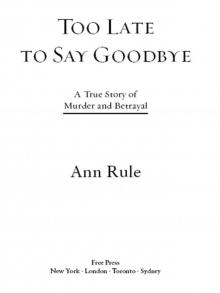 Too Late to Say Goodbye: A True Story of Murder and Betrayal
Too Late to Say Goodbye: A True Story of Murder and Betrayal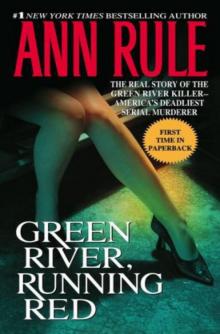 Green River, Running Red
Green River, Running Red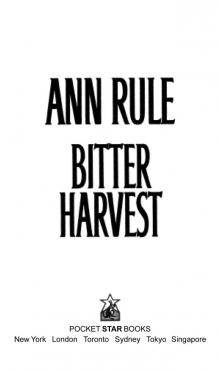 Bitter Harvest
Bitter Harvest Dead by Sunset: Perfect Husband, Perfect Killer?
Dead by Sunset: Perfect Husband, Perfect Killer?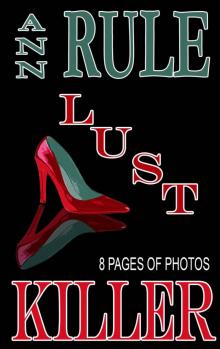 Lust Killer
Lust Killer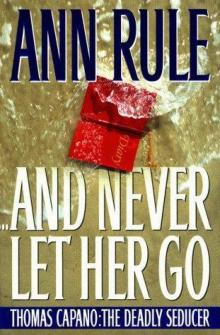 And Never Let Her Go: Thomas Capano: The Deadly Seducer
And Never Let Her Go: Thomas Capano: The Deadly Seducer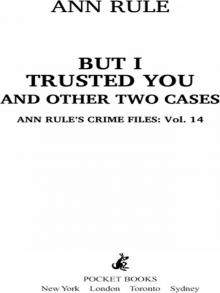 But I Trusted You and Other True Cases
But I Trusted You and Other True Cases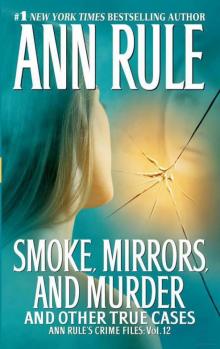 Smoke, Mirrors, and Murder and Other True Cases
Smoke, Mirrors, and Murder and Other True Cases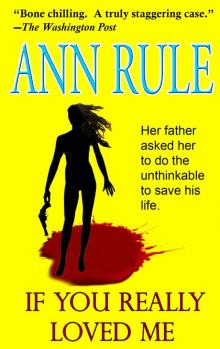 If You Really Loved Me
If You Really Loved Me Kiss Me, Kill Me and Other True Cases
Kiss Me, Kill Me and Other True Cases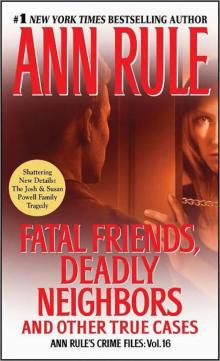 Fatal Friends, Deadly Neighbors and Other True Cases
Fatal Friends, Deadly Neighbors and Other True Cases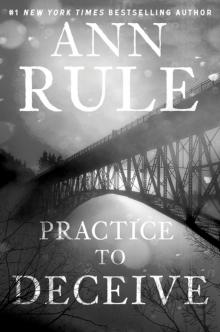 Practice to Deceive
Practice to Deceive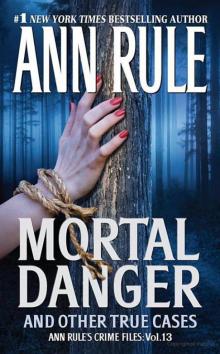 Mortal Danger and Other True Cases
Mortal Danger and Other True Cases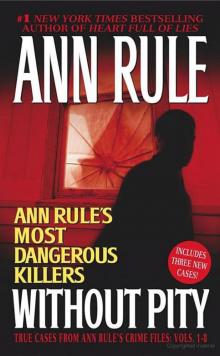 Without Pity: Ann Rule's Most Dangerous Killers
Without Pity: Ann Rule's Most Dangerous Killers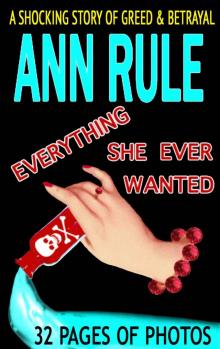 Everything She Ever Wanted
Everything She Ever Wanted A Fever in the Heart and Other True Cases
A Fever in the Heart and Other True Cases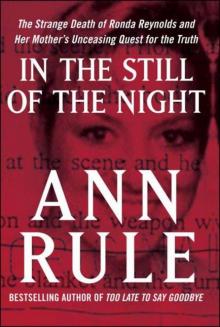 In the Still of the Night
In the Still of the Night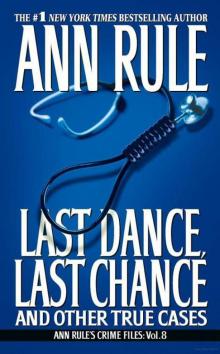 LAST DANCE, LAST CHANCE - and Other True Cases
LAST DANCE, LAST CHANCE - and Other True Cases A Rage to Kill
A Rage to Kill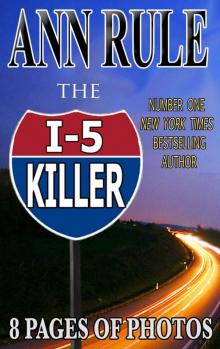 The I-5 Killer
The I-5 Killer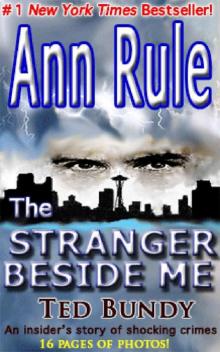 The Stranger Beside Me
The Stranger Beside Me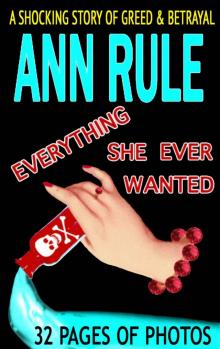 Everything She Ever Wanted: A True Story of Obsessive Love, Murder, and Betrayal
Everything She Ever Wanted: A True Story of Obsessive Love, Murder, and Betrayal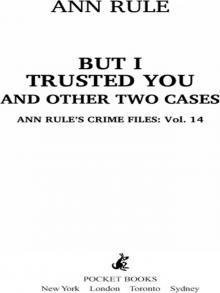 But I Trusted You
But I Trusted You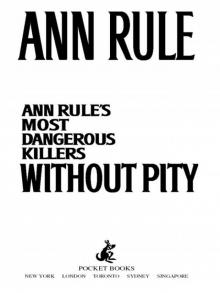 Without Pity
Without Pity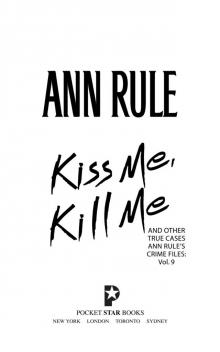 Kiss Me, Kill Me
Kiss Me, Kill Me Too Late to Say Goodbye
Too Late to Say Goodbye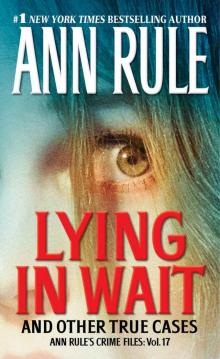 Lying in Wait
Lying in Wait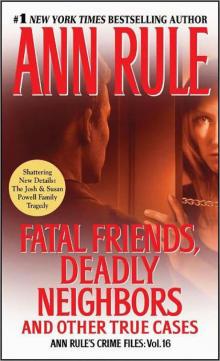 Fatal Friends, Deadly Neighbors
Fatal Friends, Deadly Neighbors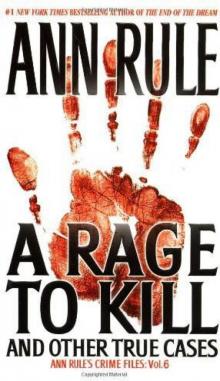 A Rage to Kill: And Other True Cases
A Rage to Kill: And Other True Cases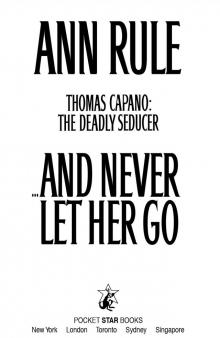 And Never Let Her Go
And Never Let Her Go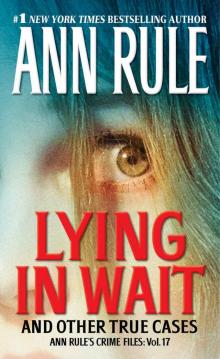 Lying in Wait Ann Rule's Crime Files Vol.17
Lying in Wait Ann Rule's Crime Files Vol.17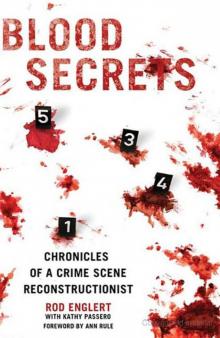 Blood Secrets: Chronicles of a Crime Scene Reconstructionist
Blood Secrets: Chronicles of a Crime Scene Reconstructionist No Regrets
No Regrets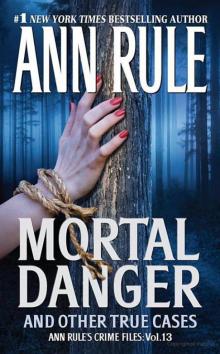 Mortal Danger
Mortal Danger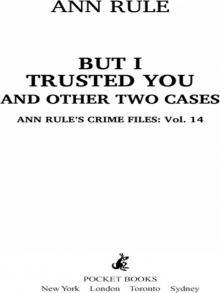 But I Trusted You: Ann Rule's Crime Files #14
But I Trusted You: Ann Rule's Crime Files #14 Empty Promises
Empty Promises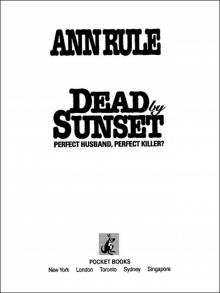 Dead by Sunset
Dead by Sunset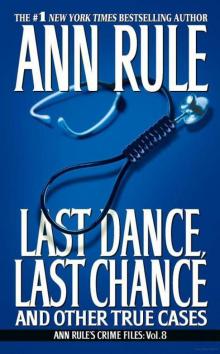 Last Dance, Last Chance
Last Dance, Last Chance Don't Look Behind You
Don't Look Behind You